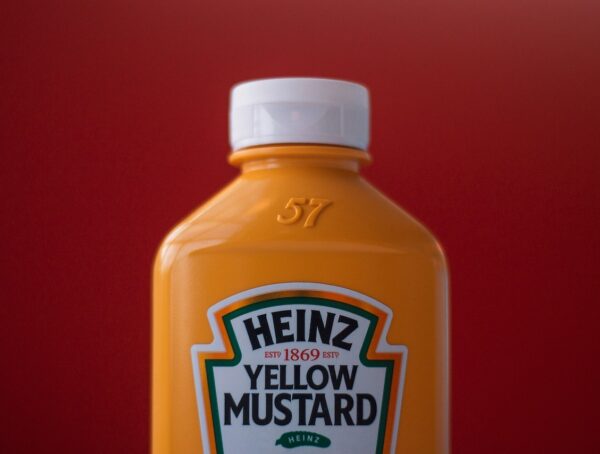Hot dogs are by far one of the favorites for Americans but it’s a meal or hefty snack that’s enjoyed around the world. There are many different variations of hot dogs and the ingredients can vary from one to the other.
Some hot dogs may be too flavorful for some, whereas others may find the plain options are lacking certain herbs or spices. Everyone has their personal preference from the type of sausage used, the buns or bun-substitute that that hot dog goes in and the toppings used.
In this guide, you’ll learn about what’s typically found in a lot of hot dog sausages so that you know what you’re looking for when shopping in-store and at your local butchers or meat market.
The most popular types of hot dogs
Hotdogs come in different variations and can be broken down into three categories:
- Sausages
- Frankfurters
- Wieners
With that said, let’s look at some typical hot dogs that come under each of these categories.
1. Sausages
A sausage is a ground-up meat that’s encased in the animal’s intestine or a synthetic material.

There are lots of different sausages but a few common types are as follows:
- Vienna Sausage – Very similar to frankfurters and weiners. They typically have similar ingredients used but they are often softer and smaller in size. These are often packed in cans.
- Pork Sausage – A much more indulgent type of sausage that you may sometimes see on more gourmet hot dogs. This is made from a variety of trimmings or pork cuts and then seasoned with spices, as well as salt and black pepper.
- Dry Sausage – A variety of sausage that’s fermented and dried out. Some are smoking during this process too and ultimately have a longer shelf life.
2. Wieners
Wieners or Wienerwurst as they were originally called is a hot dog that was created by German Americans.
The word is German for Vienna sausages, which you’ll already know is a type of sausage.
A Weiner is often a term that’s used interchangeably when it comes to hot dogs or frankfurters.
 These have the same formula as frankfurters and are popular to serve at parties but also when it comes to mobile catering as they’re easy to grill.
These have the same formula as frankfurters and are popular to serve at parties but also when it comes to mobile catering as they’re easy to grill.
3. Frankfurter
The Frankfurter can either be all beef or a beef and pork combination.
Otherwise referred to as Franks, they’re usually seasoned with garlic, salt, and pepper as well as a few other spices.
These are hot dogs that are cured, smoked, and then cooked.
 They can also vary in size and there are three known varieties of frankfurters.
They can also vary in size and there are three known varieties of frankfurters.
- Frankfurter Rindswurst – Made from pure beef meat and can be boiled, broiled, or grilled depending on your preference.
- Frankfurter Würstchen – A thin and boiled sausage that’s made out of pure pork and casing from lamb intestine. This variety needs to be heated in hot water.
- Frankfurter Würstel – A type of sausage that’s the same as the Vienna sausage. The method of preparation, ingredients, taste, and size will depend on the manufacturer.
What ingredients may be in your hot dog?
Aside from the meat that primarily makes up the hot dog, there are some other ingredients that will often be found in these food products. There’s often a lot of confusion over how hot dogs are made, what these ingredients are, and how healthy they may be for your body, so let’s break it down.
This list isn’t exhaustive but it does feature a lot of common ingredients found in your average hot dog.
- Beef or Vegetable Stock – This is often a key ingredient in soup or in a lot of dishes that require sauces. Beef stock is commonly used in these hot dogs, as is vegetable stock when it’s a vegetable sausage.
- Collagen Casing – A casing alternative to a dog or sheep intestines. This is an edible casing made from beef proteins.
- Salt – An essential ingredient to help the process of curing meat. Protects the meat from bacteria, adds texture and flavor, and above all, improves shelf life.
- Citric Acid – Citric acid is something that naturally occurs in most fruits and it’s often used in hot dogs to help control any acidity in products.
- Autolyzed Yeast Extract – A flavor enhancer that is often used to add a meaty flavor to the sausage.
- Celery Powder – This powder is a concentrate made from fresh celery. It has been dried and ground up and is often added as a spice. It’s also used as a base for many sauces too, as is stock. It also helps give the cured meats their pink color.
- Water – When it comes to the USDA, hot dogs need to be made up of less than 10% water, so that’s why you’ll see water in the ingredients.
- Corn Syrup – Used as a common food ingredient for many dishes. It’s often used to provide texture and sweetness.
- Ascorbic Acid – Known as Vitamin C, it helps the process of curing the meat and the sodium nitrite, which is used for curing meats.
- Cherry Powder – A finely ground powder that’s extracted from cherries. This can help with color of the meat and as a source of Vitamin C.
- Spices – A range of spices can be used when it comes to flavoring sausage meat and some may prefer more or less dependent on their tastebuds. Some may include white and black pepper, cinnamon, cumin, paprika, or garlic for example.
- Hydrolyzed vegetable protein – Used as a flavor enhancer which is produced when boiling or breaking down cereals like corn, soy, or wheat.
- Lauric Arginate – A derivative from lauric acid that prevents bacterial growth and is, therefore, useful for shelf life.
- Phosphates – A naturally occurring element that helps maintain moisture in products to enhance juiciness and tenderness.
- Sorbitol – A sugar substitute found in fruits. Adds to overall flavor and sweetness.
Understanding the different ingredients used in your hot dogs will ensure you are buying only the very best in quality when it comes to your hot dogs!
More from Articles
Hot Dogs in Cinema: Iconic Hot Dog Movie Moments
Hot dogs, the classic street food we all adore, have had some pretty memorable moments in the world of cinema! Introduction …
Fun Hot Dog Serving Ideas At Children’s Parties
If you're looking to delight your little guests with something as fun to eat as it is tasty, look no …
The Best Hot Dog Sauces from Around the World
Embark on a global culinary journey as we explore the best hot dog sauces from around the world! Hot dogs vary …
















